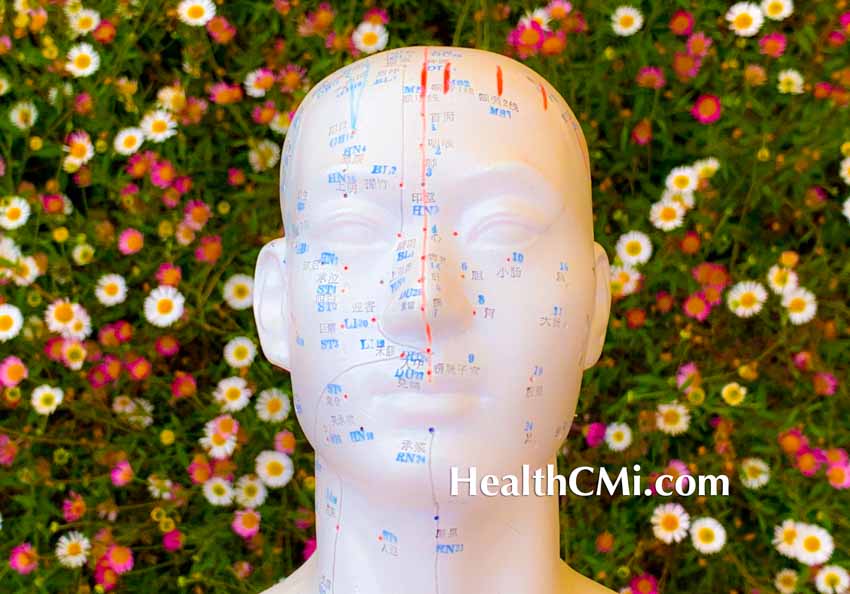
Acupuncture is effective for the treatment of depression. Guangzhou First People’s Hospital (affiliated with Guangzhou Medical University) researchers compared SSRI (serotonin reuptake inhibitor) monotherapy with SSRI plus electroacupuncture therapy. The data driven results determined that the combined therapy increases the rate of positive patient outcomes.
The integrated therapy group received the identical SSRI medication (escitalopram) as the drugs only group. Subjective and objective data shows that the addition of electroacupuncture therapy significantly improves outcomes for patients with major depressive disorder (MDD). The results show that the integrated approach is more effective at restoring cognitive functions and normal serum levels of cytokines interleukin-1 β (IL-1β), interleukin-2(IL-2), interleukin-6 (IL-6), and tumor necrosis factor-α (TNF-α). [1]
Loewenstein Occupational Therapy Cognitive Assessment (LOTCA) scores were significantly better in the group receiving acupuncture. LOTCA is a cognitive test that measures basic cognitive skills required for everyday function. The subitems in this scale include orientation, visual perception and psychomotor abilities, problem-solving skills, and thinking operations. In the electroacupuncture group, the scores improved to 15.71 ±1.92, 15.21±1.23, 11.68 ±1.93, 11.5 3±1.23, and 23.32 ±2.51 respectively, higher than those in the drug control group at 15.52 ±2.01, 15.06 ±1.83, 11.52 ±1.92, 11.41 ±1.35, and 23.00 ±3.91.
Serum pro-inflammatory factors are typically higher in patients with MDD, which reflects the severity of the condition and indicates potential impacts on physical well-being. The results show that serum pro-inflammatory factors, including IL-2, IL-1β, IL-6, and TNF-α in both groups decreased. However, the figures in the electroacupuncture group were markedly lower at 36.33 ±9.63, 10.53 ±3.36, 17.30 ±0.86, and 20.27 ±8.62 respectively. By contrast, the figures for the drug control group were 38.53 ±7.25, 16.53 ±3.36, 18.30 ±0.86, and 23.27 ±8.62. The results demonstrate that the addition of electroacupuncture to SSRI therapy significantly improves downregulation of pro-inflammatory factors.
From June 2018 to June 2019, a total of 100 patients with major depressive disorder were admitted into the study. The patients were randomized into 2 groups of 50. For the drug control group, 23 were males and 27 were females. Age range was 18 to 60 years. Mean age was 43.25 ±6.02 years. The range of disease course was 10 to 48 months. Mean disease course was 25.34 ±6.76 years.
For the integrated therapy group, 22 were males and 28 were females. Age range was 19 to 60 years. Mean age was 43.92 ±6.52 years. The range of disease course was 11 to 48 months. Mean disease course was 26.34 ±7.18 years. The two groups presented no significant statistical distinctions in terms of course of disease, age, and years of formal education. Exclusion criteria were the taking of immunosuppressors or immunoenhancers within 6 months of the study, infections, and suicidal inclinations.
The treatment procedure term lasted for 6 weeks in both groups. For the drug control group, 10 mg escitalopram was prescribed for patients once or twice daily, depending on a patients’ individual condition. For the other group, electroacupuncture was administered in addition to escitalopram. The main points used were the following:
- GV20 (Baihui)
- ST36 (Zusanli)
Filliform needles with a diameter of 0.33 mm and a length of 33 mm were selected for the two points. On Baihui, a forward-transverse insertion method was applied, with a depth of 15 to 20 mm. For bilateral Zusanli, an upward oblique insertion method was applied, with a depth of 15 to 22 mm. Upon achieving a deqi sensation through twisting and twirling, an electroacupuncture device was employed. Electroacupuncture was set to 80 and120 Hz. Treatment was given 45 minutes daily for two consecutive days, followed by a two-day break, with 7 days completing a treatment course. Patients underwent 6 courses in total.
Supplementary acupoints were chosen based on a patient’s symptom pattern based on differential diagnostics. For the liver depression and spleen deficiency patient, GB34 (Yanglingquan) and SP6 (Sanyinjiao) were used. For the liver and kidney yin deficiency patient, SP6 (Sanyinjiao) and KD3 (Taixi) were chosen. For the supplementary acupoints, needles (0.30 mm diameter, 50 mm length) were inserted and insertion depth was 25 to 45 mm. A perpendicular insertion method was used.
The results indicate that serotonin reuptake inhibitors (SSRIs) are more effective when combined with electroacupuncture. Both subjective and objective measures show increased positive patient outcomes when drug therapy is combined with acupuncture therapy for patients with MDD.
Reference:
[1] Gu Zhiwen, Huang Xiong, Chenliping, Xue Dan, Effect of Electroacupuncture Combined with escitalopram on Cognitive Function and Serum Inflammatory Factor in Patients with Major Depressive Disorder, Shandong Journal of Traditional Medicine, Vol. 40, No. 9, 2021.


